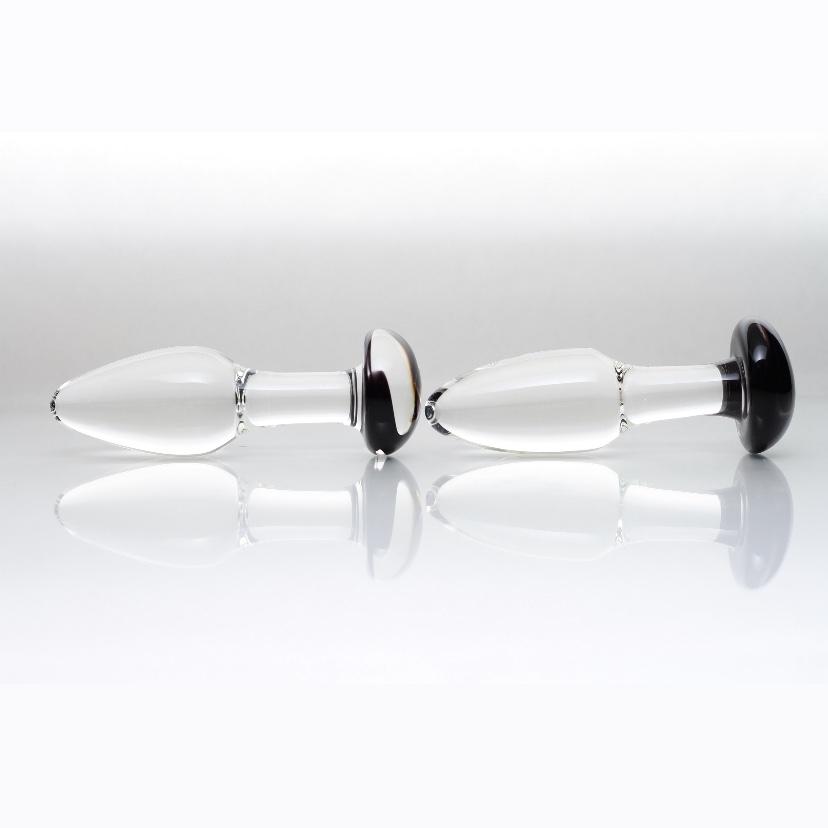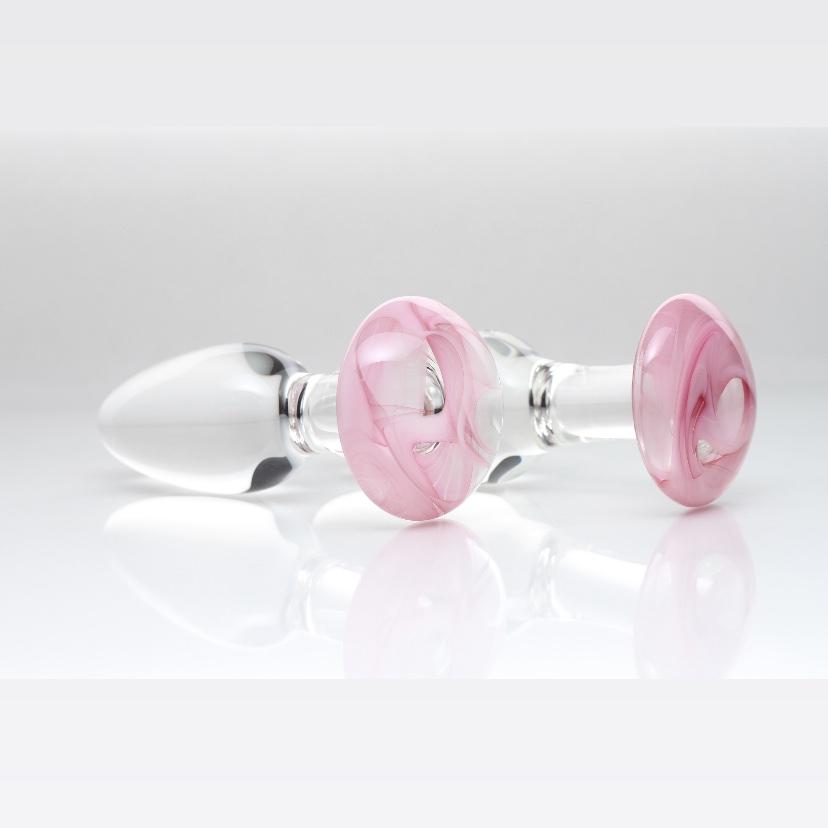
10 Common Female Orgasm Killers (and How to Overcome Them)
Orgasm isn’t solely about physical stimulation—it’s an intricate, whole-body experience influenced by a complex blend of emotional, mental, and environmental factors. For many women, the path to pleasure isn’t as straightforward as physical touch; it’s shaped by how safe, relaxed, and connected they feel in the moment. Despite the popular narrative that sexual satisfaction is only a matter of mastering techniques, deeper issues often create unseen barriers that block relaxation, arousal, and ultimately, orgasm. These obstacles can be rooted in the mind, relationships, or surroundings, and overcoming them requires more than just physical effort—it demands emotional attunement, patience, and mutual understanding.
Pleasure requires vulnerability, and vulnerability can only exist in an environment where emotional safety is present. When a woman feels emotionally, mentally, physically, or sexually unsafe, it can manifest as anxiety, tension, and self-consciousness. In these moments, the body becomes tense and closed off, making it difficult for her to fully relax and experience pleasure. This lack of safety can lead to her trying to please her partner to avoid conflict or emotional discomfort, or even faking pleasure and orgasms to maintain harmony. However, in this state, her body is unlikely to open up to arousal or reach orgasm. Without emotional safety, the body remains on high alert, preventing the relaxation needed to fully engage in the experience.
Why It Matters: Safety is essential for the body to transition from a state of stress (the fight-or-flight response) into one of openness and receptivity. When emotional safety is compromised, the brain signals the body that it is in danger, and the body remains tense. This blocks arousal before it even has a chance to build. Physical relaxation, which is key to sexual pleasure, is inhibited by underlying emotional stress. Without emotional safety, pleasure becomes a distant goal because the body is unable to trust the experience and remain open to intimacy. Emotional security creates the foundation necessary for full engagement in sexual experiences, allowing both physical and emotional pleasure to unfold naturally.
How to Fix It: Creating emotional safety requires building trust through consistent emotional support and communication. It starts with being present and available for her, actively listening without judgment or interruption. Allow her to express her needs, desires, and vulnerabilities, and make sure she feels heard and understood in both sexual and non-sexual contexts. Avoid criticism or any form of shaming, as these can quickly erode emotional safety. Reinforce her value by showing care and respect not only during intimate moments but also in everyday interactions. Small gestures—whether it's a thoughtful touch, words of affirmation, or acts of kindness—can go a long way in making her feel loved and appreciated.
Reassure her that her comfort and emotional well-being are your priorities. Cultivate a sense of mutual respect by being gentle with her, both physically and emotionally. Create an environment where she feels free to express her pleasure and discomfort openly, knowing she won’t be judged or invalidated.
For many women, arousal is a gradual, whole-body experience that begins in the mind and spreads through the body before reaching the genitals. Unfortunately, influenced by portrayals of sex in media like porn, many lovers rush straight to genital stimulation without properly warming up the body. This hasty approach often ignores the crucial need for emotional and physical arousal to be built up gradually. If a woman isn’t sufficiently aroused, genital touch and penetration can feel uncomfortable, even painful, or simply unpleasurable. Rushing to this area too soon can short-circuit the natural process of arousal, making it difficult for her to relax and fully enjoy the experience.
Why It Matters: A woman’s body requires time and attention to awaken fully to touch. Just as we would warm up before exercise to avoid injury, her body needs a slow, deliberate build-up to sexual intimacy. When foreplay is rushed or limited to brief moments of physical touch, the body doesn’t have the opportunity to become receptive and fully sensitized. Prolonged and varied foreplay increases blood flow to the genitals, making them more sensitive and responsive to stimulation. Without adequate time for this process, genital touch can feel jarring or out of place, which can limit pleasure and even lead to discomfort. Additionally, rushing into genital play without building emotional intimacy can diminish the connection between partners, leaving the experience feeling disconnected or mechanical.
How to Fix It: Focus on creating a gradual, multi-sensory build-up that awakens the entire body before focusing on the genitals. Start by engaging in non-genital touch that nurtures connection and intimacy. Kissing, gentle caresses, light body massages, or even simply holding hands can all create a deeper bond and help both partners feel more connected. Pay attention to her body language and responses—look for moments when she seems to open up, relax, and invite more touch. Rather than jumping directly into genital stimulation, focus on her emotional and physical responses to other forms of intimacy.
Extend the foreplay with varying types of touch: use your hands to caress her arms, neck, back, or thighs. Use slow and sensual kissing to explore the face, neck, or ears, which can be incredibly arousing and deepen her sense of connection with you. As her body starts to awaken, the anticipation will build, and she’ll become more eager for genital play. Once the genitals are finally touched, they’ll be far more sensitive, receptive, and ready for deeper pleasure.
By taking your time and building anticipation, you show that you care about her experience beyond just the physical act, creating a space for her to feel cherished, heard, and truly relaxed. This approach leads to heightened sensitivity, deeper pleasure, and a more fulfilling intimate experience for both partners. Think of the genitals as the final destination on a long and rewarding journey—not the starting point.
Even when it’s not explicitly stated, the unspoken expectation for a woman to reach orgasm during intimacy can create immense pressure. Phrases like, “Did you finish?” or subtle shifts in tone or body language can reinforce the idea that an orgasm is the ultimate goal of the encounter. As a result, women may feel the need to “perform” or fake responses to meet perceived expectations. This performance mentality shifts the focus away from authentic pleasure, turning an intimate moment into a task to accomplish. Such pressure can also inhibit her ability to stay present in the experience, making it more difficult for her to connect with her arousal.
Why It Matters: Anxiety is one of the biggest blockers of arousal, and the pressure to orgasm fuels it. Orgasm isn’t just a physical act—it’s the culmination of relaxation, arousal, and emotional openness. When a woman feels pressured, her mind often shifts from enjoying the sensations to worrying about “achieving” something, which disrupts her natural progression toward pleasure. The focus on outcome over experience can also erode trust and intimacy, as she may feel that her worth or success in bed is being measured by whether or not she orgasms.
How to Fix It: The key to addressing this issue is to shift the narrative away from goals and toward shared intimacy. Openly communicate that your focus is on mutual pleasure, connection, and exploration rather than reaching any specific milestone. Avoid asking direct questions about whether she climaxed or expressing disappointment if she doesn’t. Instead, focus on creating a relaxed and pleasurable environment where she feels free to explore her sensations without judgment or expectation.
Reassure her that her pleasure doesn’t have to culminate in orgasm to be meaningful. A statement like, “I love seeing you enjoy yourself, no matter where it leads,” can take the pressure off and allow her to focus on the moment rather than the outcome. Explore different types of touch and intimacy that feel good for her without fixating on a specific endpoint. For instance, engaging in sensual massages, slow foreplay, or non-penetrative play can help her experience pleasure in a more relaxed way.
Additionally, pay attention to your nonverbal cues. Anxious body language, impatience, or overemphasis on her responses can inadvertently reinforce pressure. Instead, adopt a calm and curious approach, allowing her to guide the experience. If she expresses frustration about not reaching orgasm, validate her feelings and encourage her to see the encounter as a journey rather than a destination.
4. Lack of Emotional Connection
For many women, emotional intimacy is deeply intertwined with physical arousal. Unlike what media or societal norms often portray, sexual satisfaction isn’t just a physical act—it’s an experience rooted in emotional connection, trust, and vulnerability. When the emotional bond between partners feels weak, strained, or neglected, sexual encounters can begin to feel empty or even mechanical, lacking the passion and authenticity that make them truly fulfilling. Physical touch alone may fail to evoke desire or pleasure if a woman doesn’t feel emotionally understood, valued, or connected to her partner. In such situations, even well-intentioned gestures of affection can feel hollow, as the foundation of trust and intimacy has not been nurtured.
Why It Matters: Without this bond, intimacy can start to feel transactional, more like a routine or obligation than a shared journey of pleasure and connection. A lack of emotional connection may also lead to misunderstandings and frustration, with one partner misinterpreting the other’s disengagement as a lack of desire or interest, creating further distance and tension in the relationship.
How to Fix It: To address this, it’s essential to prioritize the relationship outside of the bedroom. Building emotional intimacy requires consistent effort and attention, as it is cultivated through everyday actions and interactions. Engage in meaningful conversations where you actively listen and show genuine interest in her thoughts, feelings, and experiences. Share your own vulnerabilities as well, creating a space where openness and honesty feel safe and encouraged. Make an effort to spend quality time together, whether that means going on dates, exploring mutual hobbies, or simply enjoying quiet moments without distractions.
Affection outside of sexual contexts is also vital. Simple gestures like holding hands, giving a warm hug, or complimenting her in an authentic way can go a long way in making her feel cherished and connected to you. These non-sexual expressions of love and care reinforce that your desire for her is not purely physical but encompasses the entirety of who she is. When she feels seen, respected, and valued, it becomes much easier for her to relax and engage in intimacy with a sense of trust and enthusiasm.
5. Feeling Rushed or Unimportant
When intimacy feels rushed or when a woman feels as though her pleasure is secondary to the experience, it can lead to significant emotional and physical disconnection. Rushing through moments of intimacy—whether due to external pressures, impatience, or focusing too much on reaching the end goal—can leave a woman feeling neglected and undervalued. Feeling like she’s simply a means to an end rather than the center of the experience diminishes her sense of worth and can shut down her ability to fully engage. This lack of attention can also lead to frustration and dissatisfaction, preventing her from relaxing enough to fully enjoy the experience or reach orgasm.
How to Fix It: To ensure that she feels prioritized and valued during intimacy, slow down and be mindful of her needs. Take your time and focus on nurturing the connection, rather than rushing toward a particular outcome. Show her through your actions and words that her pleasure is just as important as yours. Ask her what feels good, what she enjoys, and what she needs in the moment, ensuring that you are fully present and attentive to her. Incorporate gentle touches, meaningful eye contact, and words of affirmation to demonstrate that she is cherished. Let her know that the experience is about mutual enjoyment and connection, not just a goal to be reached.
Clear communication is the cornerstone of a fulfilling sexual relationship. Without it, partners are left to guess each other’s needs and desires, which often leads to missed opportunities for deeper connection and pleasure. Miscommunication—or the lack of communication altogether—can foster feelings of inadequacy or confusion, as one partner may misinterpret silence as indifference or dissatisfaction. For women, who often require a sense of safety and understanding to fully relax into intimacy, this lack of open dialogue can make it harder to reach arousal or orgasm. In essence, the absence of communication creates a void that blocks genuine connection, trust, and satisfaction for both partners.
How to Fix It: The key to overcoming communication barriers is to create a safe and judgment-free environment for dialogue. Start by explicitly inviting her to share her thoughts, preferences, and feelings. Use language that assures her she won’t be judged or criticized, such as, “I want to know what feels good for you and what you enjoy, so I can make this experience as wonderful as possible for both of us.” Be patient and understanding if she struggles to open up, as this might be a new or vulnerable experience for her.
When she does express herself, practice active listening. This means giving her your full attention, maintaining eye contact, and showing that you value her input through verbal affirmations like, “I hear you” or “Thank you for telling me that.” Avoid interrupting or dismissing her feelings, even if they’re surprising or difficult to hear. If she expresses discomfort or dissatisfaction, resist the urge to become defensive; instead, use the opportunity to grow together by asking how you can improve.
It’s also important to share your own thoughts and preferences in a considerate and open manner. Vulnerability is reciprocal—when you’re willing to express your own feelings, it makes her feel safer to do the same. Over time, this mutual openness builds trust and encourages honest, ongoing dialogue.
If direct conversations feel awkward at first, consider starting with smaller steps, such as discussing preferences during non-intimate moments or using resources like books, guides, or questionnaires to explore each other’s desires. Make it a habit to check in regularly about how you both feel about your intimacy, reinforcing that communication isn’t a one-time effort but an ongoing part of your relationship.
7. Unrealistic Expectations
Pain or discomfort during intimacy can significantly disrupt the experience, making it difficult for a woman to stay present or enjoy herself. This may arise from insufficient lubrication, overly vigorous touch, uncomfortable positions, or even underlying health issues such as vaginal dryness, pelvic floor dysfunction, endometriosis or infections. When discomfort occurs, it can pull her out of the moment, causing physical tension and emotional distress. If pain persists, it can lead to anxiety around sex, which may compound any further difficulty in reaching arousal or orgasm. For many women, physical discomfort is a major barrier to pleasure and can contribute to feelings of frustration, embarrassment, or even resentment.
Why It Matters: Physical discomfort signals the body to tense up, both mentally and physically, which is the opposite of what is needed for arousal and orgasm. Relaxation is a crucial part of sexual pleasure; if pain is present, the body may enter a protective “fight or flight” response that prevents the release of tension, which is needed for orgasm. Additionally, when pain occurs, it may lead to emotional distress or avoidance, creating a mental block that further hinders sexual pleasure. Ignoring discomfort may also contribute to long-term negative associations with intimacy, leading to a cycle of anxiety around sex.
How to Fix It: Prioritize her comfort by consistently checking in and being responsive to her needs. One of the simplest ways to address discomfort is by using lubrication. Lubrication not only prevents friction but also enhances sensation and comfort, allowing both partners to focus on pleasure. Additionally, adjusting positions to find what is most comfortable and enjoyable can make a huge difference. If certain movements or positions seem to cause pain, slow down and experiment with alternatives. Throughout the experience, regularly ask her if she is comfortable, making sure that any discomfort is addressed immediately.
In cases where discomfort persists, it’s important to take the matter seriously. Encourage her to consult a healthcare professional, such as a gynecologist or pelvic floor specialist, to explore any potential underlying issues. Conditions like endometriosis, vaginismus, or infections can contribute to pain during sex and should be properly diagnosed and treated. Working together to create a safe, comfortable environment is crucial for both physical and emotional intimacy, allowing for a deeper connection and more satisfying sexual experience.
9. Being Compared to Others
When a woman hears her partner mention an ex, make comparisons to porn stars, or reference influencers with unrealistic beauty standards, it can strike at her sense of self-worth. Comments like these, even if unintended or casual, often leave a lasting impression. Women may internalize these remarks, questioning whether they measure up or if their partner is secretly dissatisfied. This can lead to feelings of insecurity, self-doubt, or inadequacy. Over time, these comparisons can create a wedge in the relationship, making it harder for her to feel confident, relaxed, and fully present in intimate moments.
Why It Matters: Comparison undermines the individuality and uniqueness of a person. Every woman’s body, preferences, and experiences are distinct, and being held up to someone else’s standard—real or fictional—can make her feel less valued for who she truly is. Confidence and self-acceptance are vital for arousal and intimacy, and when a woman feels compared to others, it can block her ability to embrace her sexuality. In essence, intimacy is about celebrating the connection between two unique individuals. When that connection is overshadowed by comparisons, it erodes trust, openness, and emotional safety, all of which are critical for a satisfying relationship.
How to Fix It: The most effective way to combat the negative effects of comparison is to eliminate it entirely from your relationship dynamic. Be mindful of your words and how they might be interpreted. Avoid discussing past partners, critiquing her body in relation to others, or making offhand comments about media figures that might make her feel inadequate. Instead, focus on celebrating her individuality—both in and out of the bedroom.
Highlight the things you love about her, not just physically but emotionally and intellectually. Compliments like, “I love the way you make me laugh,” or, “Your touch drives me crazy,” can go a long way in reinforcing her confidence and sense of uniqueness. Show genuine appreciation for her body as it is, and express your gratitude for the connection you share, reminding her that your desire is rooted in her, not in comparisons to anyone else.
When discussing intimacy, make it clear that your focus is on mutual pleasure and discovering what works for the two of you. Statements like, “What feels good to you is what’s most important to me,” can reassure her that your priority is her comfort and satisfaction, not some external standard.
Additionally, if past comments or habits have unintentionally caused hurt, take accountability and address them. Apologize sincerely and express your commitment to building a more affirming and secure environment moving forward. This acknowledgment helps rebuild trust and shows her that you value her feelings.
By celebrating her for who she is and making it clear that no one else compares, you create a foundation of security and affirmation. This approach fosters confidence and strengthens the emotional and physical connection, allowing both of you to engage in intimacy with trust and genuine desire.
10. Sensory Overload
Modern life is full of constant stimulation, from work-related stress to digital distractions and the demands of daily responsibilities. This constant sensory input can lead to mental fatigue, making it difficult for her to fully relax and be present in intimate moments. When the environment becomes chaotic—whether from loud music, fast-paced movements, or an overwhelming number of sensations—her brain may struggle to focus on pleasure. Instead of feeling aroused, she may feel overwhelmed or even disconnected from her body. Sexual experiences that are supposed to be soothing and pleasurable may end up feeling more like a sensory overload, preventing her from fully enjoying the moment or even reaching orgasm.
Why It Matters: Sensory overload is a significant barrier to relaxation, which is crucial for arousal and orgasm. If the environment or the experience itself is too intense or rushed, it pulls her out of her body and into her head, making it harder for her to tune into her own sensations or connect with her partner. The brain’s natural response to overwhelming stimuli is to become more alert and stressed, which not only hinders relaxation but can also make it impossible for her to focus on pleasure. Without the ability to relax into the experience, reaching orgasm becomes much more difficult, if not impossible.
How to Overcome It: Create an environment that promotes calmness and focus. Set a relaxing mood by dimming the lights, using soft music, and eliminating any digital distractions, such as phones or TVs. This helps signal to her brain that it’s time to unwind and be present, both mentally and physically. Additionally, simplify your approach by focusing on slow, deliberate movements. Rather than rushing through the experience, take your time and pay attention to each sensation. Let her guide the pace and intensity, tuning into her body’s responses and adjusting accordingly.
It can also be helpful to help her decompress beforehand. Engage in a relaxing activity together, such as taking a warm bath, practicing deep breathing exercises, or sharing a calming conversation. This can help both partners transition from the stresses of daily life into a more intimate and focused state. Giving her time to unwind and center herself emotionally and physically can significantly enhance the overall experience, making intimacy feel more connected and pleasurable.
-----------------------------------------------------------------------
LEARN THE SECRETS OF FEMALE PLEASURE ANATOMY

OUR FEMALE PLEASURE ANATOMY 101 INCLUDES:
- Detailed guide to anatomy of the female pleasure spots and sexual pleasure using proper anatomical terms.
- Techniques and tips on how to make these parts and you (or your female partner) feel good.
- Tips for pleasuring these spots to maximize their pleasure and orgasmic potential.
- Detailed anatomy of the vulva, clitoris, vagina, prostate, fornices, and the cervix.
- The structures responsible for arousal and orgasm in females.
- Easy to understand anatomy illustrations.
- Self- exploration practices and tips.
- Neuroanatomy of female pleasure.
TWO BONUS GUIDES:
STEP-BY-STEP BREAST MASSAGE- RADICAL SELF-LOVE PRACTICE
GUIDE TECHNIQUES TO PLEASURE THE VULVA





















